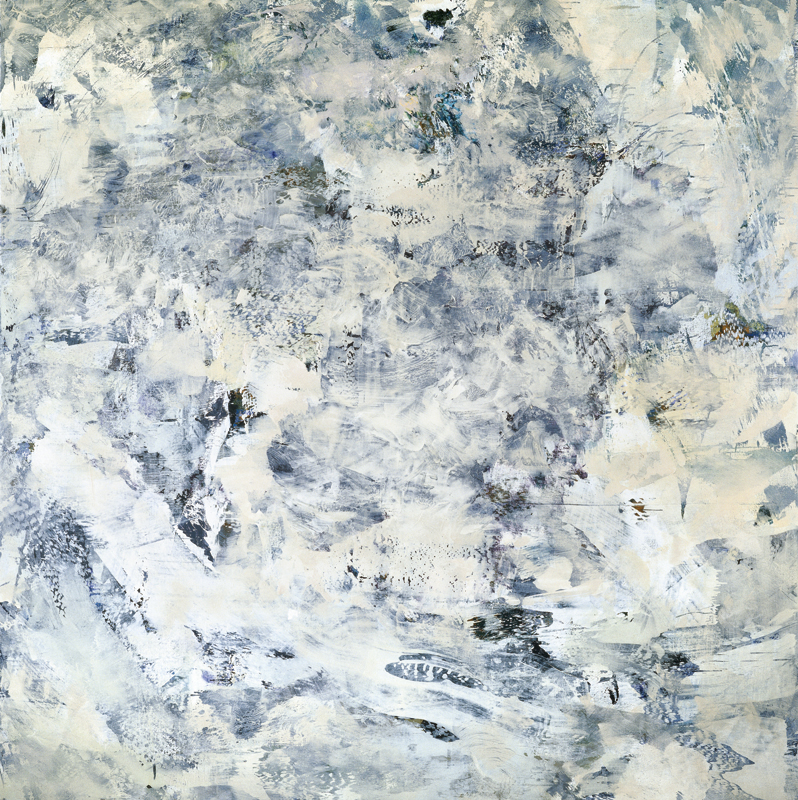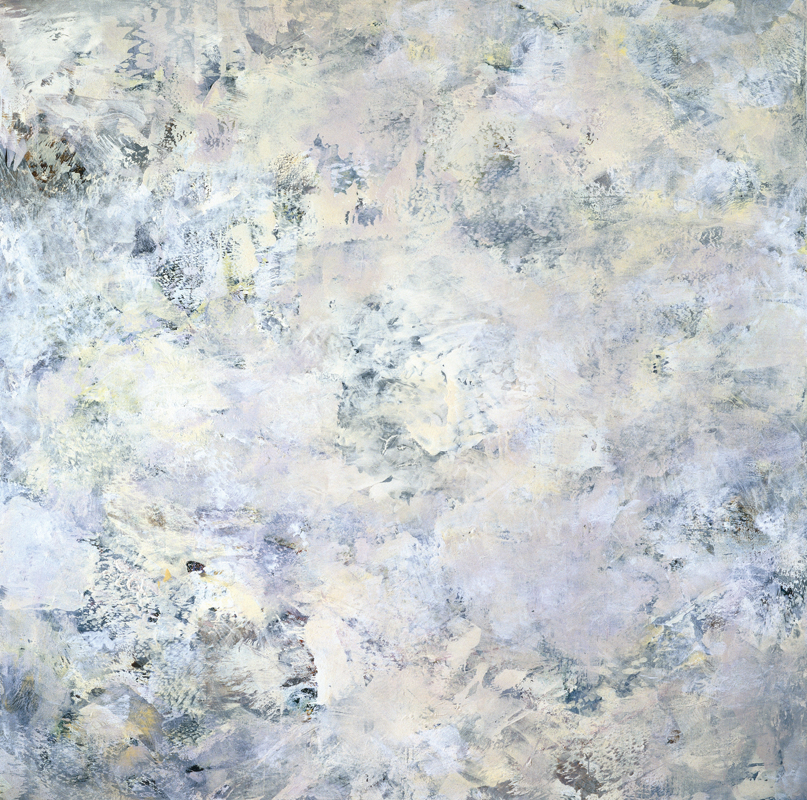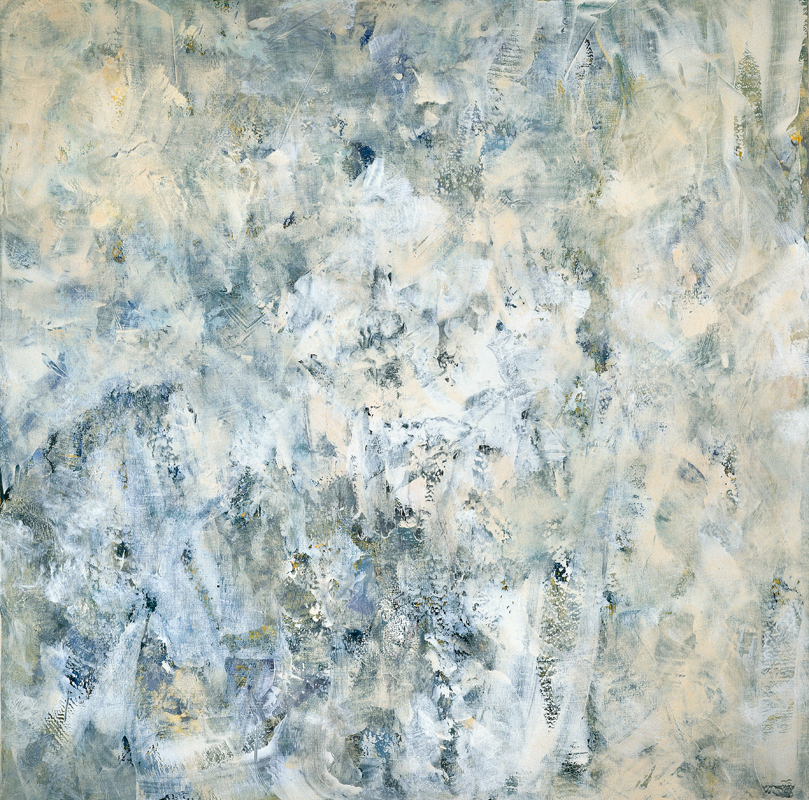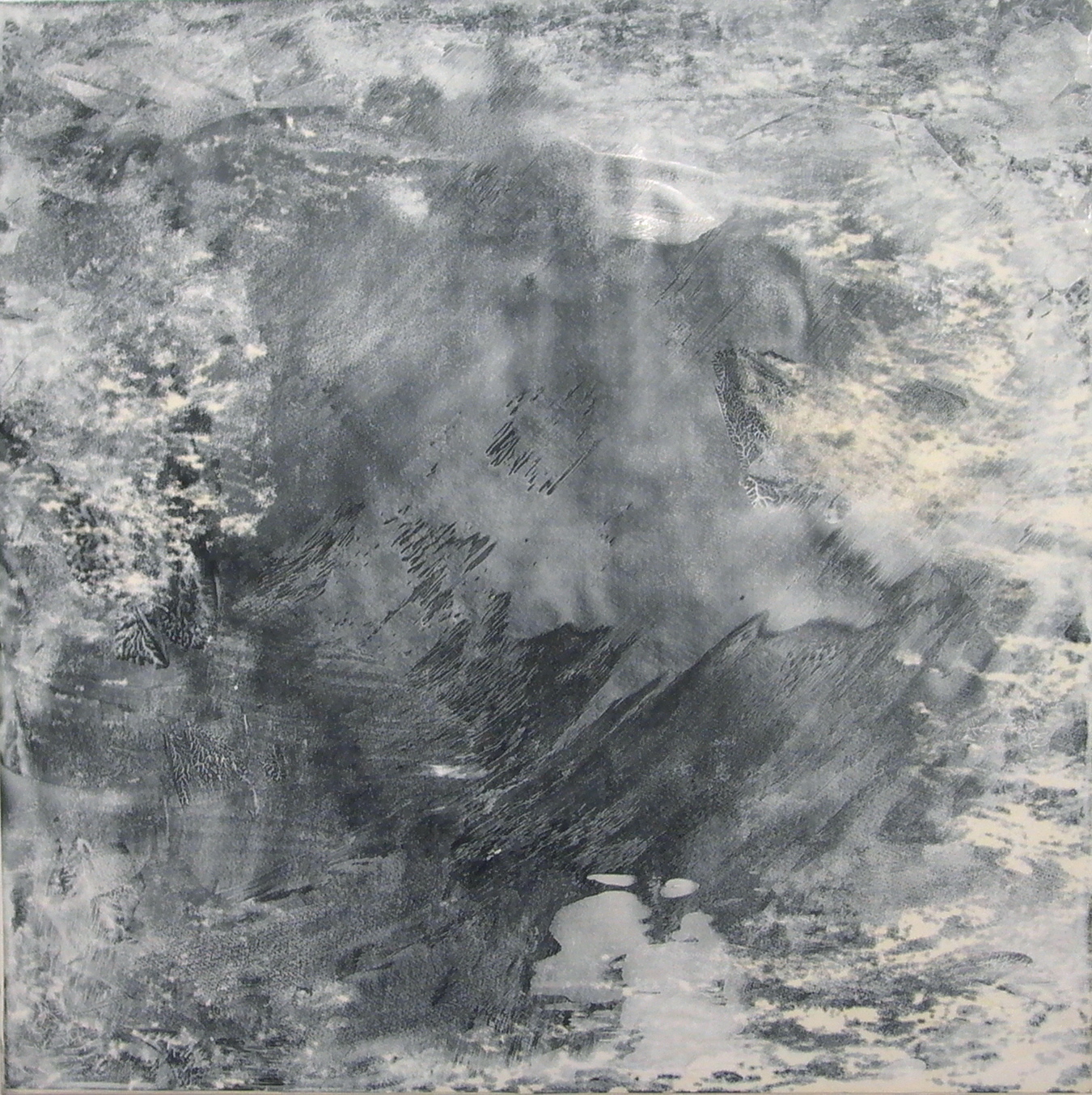ADRAGA
Inevitably, travelling, seeing new art and living in different environments was going to feed the the artist's imagination. One of the turning points seems to have come when Beard moved to Lisbon, Portugal in 1992-93 and again in 1994-96. There is something very tactile about the stones and walls, not to mention the light, in Portugal and maybe this had its impact. In Lisbon, Beard took to wandering about with a sketchbook, going back to basics by drawing what he saw wherever he went. He eventually found himself returning to one site by the cliffs that were a point of constancy in the turning world he had been traversing. There, just off Lisbon’s coast, the Adraga Rock is surrounded by raging seas, constantly changing as the waves surge around it. A black monolith surrounded by creamy white water, he has painted it again and again. - A. BOND
The Adraga series quickly evolved from a naturalistic response to the visual image of the rock, to becoming a persona with some of the anthropomorphic qualities of the early figure paintings, with a new level of sophistication and a simplification of figure/field effect. The centrally placed character heralds a new way of composing for Beard that is still informed by the history of collage and layering. But now the effect of isolating the central form manifests itself as an idea where the inanimate rock becomes an actor. This has a history in Western painting where, for example, trees in Dutch painting can stand in for figures and Courbet’s cave-mouth at the source of the River Loue becomes a sexual metaphor. - A. BOND
“The sea was like pigment, I realised when I started painting. To me the paint was like the sea. There’s this pliable material that could be thick and lumpy, solid like a trough of water, or it could be vaporous, frothy like the crash of a wave. It could be opaque or it could be transparent; all of these different qualities. It could be ill, just shimmering. It could be moving so quickly that you felt there was an incredible vibrancy about it. The totality of this experience of rock and water had this evanescence which you felt; it came right up to you, to the top of the cliff. The ‘adraga’ proje gave me clues as to how to deal with the head and the face as subje matter. I found myself literally washing in and washing away the most familiar features of reference, arresting the anticipated need for confirmation of certain aspects of subject existing behind, and perhaps beyond, the complex layering of what we know.”
A small study like Adraga 41 necessarily ends itself to minute description here because some significant nuances cannot easily be discerned in photographic reproductions. This is not merely because they eliminate the spatial properties of the frame. Adraga 41 has as its support a rough square of hand-made paper (c. 27 x 25 cm) which stands proud of the neutral white surface of the frame. Its deckle edges betoken its hand-made origin, but also create a fluctuating field that would not be so clearly signalled if the edge of the paper were straight. Moreover the paper has a pronounced texture of its own, which is not masked by the overlay of white pigment. This means that its function as a support is not easily separated from the painting’s project as a representation. By contrast, the black form of the Adraga rock suggests a relationship to a depth beyond the picture plane. Just a few passages disclose a deeper black, with a motif appearing to the left-hand side that approximates to the hieroglyphic inscription mentioned earlier. But the greater part of the rock form, where it is not obliterated by the white mass, is, so to speak, masked. This slight overlay of pigment, so thin as to turn grey because of the underlying black, looks to be the exact equivalent for the process of the water drying off, intermittently, between the assaults of the waves. - S. BANN
In one particular sequence, Adragas 80, 81, 82, 83, he deploys the lessons of the series with a confidence that merits some further attention. In the paintings of the 1980s, the emphasis on thematic development enabled him to press forward in a review of different formats and different compositional strategies. In this group of works from the subsequent decade, there is a resolution of many of these aspects, all the more satisfying perhaps for being anchored in the lure of a distinctive place. - S. BANN
Beard began experimenting with ways of achieving the same fugitive qualities in oil painting. This is not quite possible because the layering of transparent coats without the gestural intervention of the brush does not work in oils. However he did find a kind of equivalent effect that was appropriate to the medium. This entailed creating an overall surface of small marks or dabs that do not stand out from the field, but allow the artist to build up the kind of layering within a uniform surface that brings about a parallel visual ambiguity to the watercolours.
Perhaps the most extraordinary of these are the After Adraga series (2009-) in which a suggestion of the rock and sea is built up and then virtually erased with sweeping strokes of translucent white paint that brings Richter’s abstractions or over-painted photos to mind. The over- painting is applied by wiping, smearing and applying with a cloth or paper then pulling it off to produce what seem like accidental effects. This contrasts with the meticulous dabs that have built up the previous paintings and which we assume lie beneath the surface of this wave which overtakes the rock. This effect suggests to me the rock as encountered by the sea itself – as if it were sentient. The sea in this case becomes a metaphor for oceanic experience, suggesting a universal unconscious that Beard has tried to capture since the 747 insights. The material world in this scenario is encoun- tered as a collaborator in the making of meaning. - A. BOND





